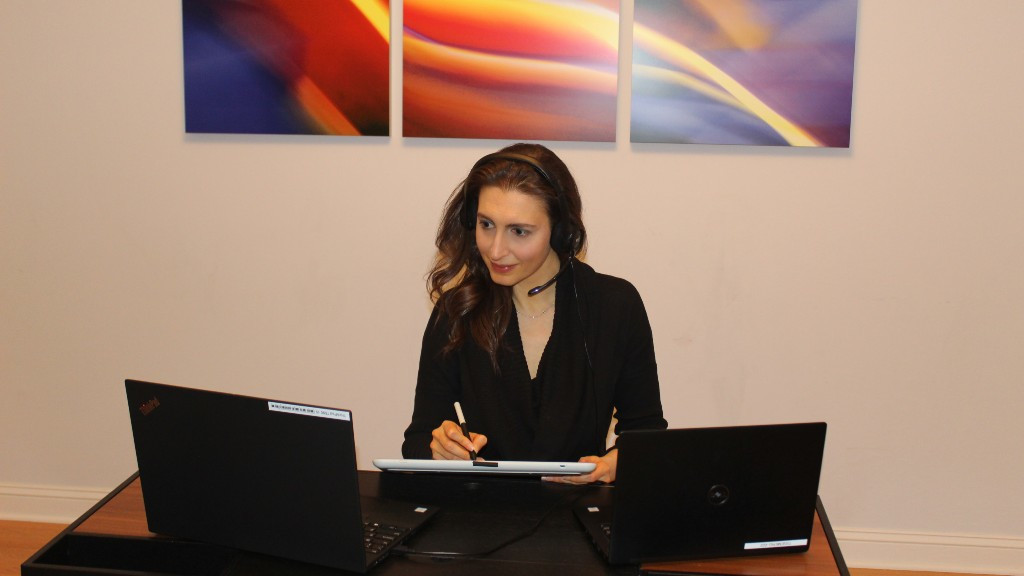"Student diversity has a powerful potential to enhance learning"
Alexandra Sedlovskaya, associate director of the C. Roland Christensen Center for Teaching and Learning at Harvard Business School

Alexandra Sedlovskaya, associate director of the C. Roland Christensen Center for Teaching and Learning at Harvard Business School
Alexandra Sedlovskaya is associate director of the C. Roland Christensen Center for Teaching and Learning at Harvard Business School. She designs and executes research pertaining to management education and pedagogies that support participant-centred learning. She recently gave a webinar on "How to create an inclusive virtual learning environment" as part of the Seminar Series on Digitalization and Transformation (SSDT): Sharing research perspectives organized by the Digital Business Research Group (DigiBiz). The event was developed by the UOC's Faculty of Economics and Business in collaboration with the Globalization and Cooperation department. It forms part of the European e‑Inclusion project, which aims to give teachers tools to facilitate education that is inclusive and responsive to diversity in their classrooms.
Alexandra Sedlovskaya is associate director of the C. Roland Christensen Center for Teaching and Learning at Harvard Business School. She designs and executes research pertaining to management education and pedagogies that support participant-centred learning. She recently gave a webinar on "How to create an inclusive virtual learning environment" as part of the Seminar Series on Digitalization and Transformation (SSDT): Sharing research perspectives organized by the Digital Business Research Group (DigiBiz). The event was developed by the UOC's Faculty of Economics and Business in collaboration with the Globalization and Cooperation department. It forms part of the European e‑Inclusion project, which aims to give teachers tools to facilitate education that is inclusive and responsive to diversity in their classrooms.
How would you define inclusive learning?
I think of inclusive learning as a participant-centred process in which students feel seen as individual learners and valued as members of a learning community.
Why is it important to create an inclusive learning environment? What are the main benefits for learners and for learning?
Student diversity has a powerful potential to enhance learning. I view an inclusive learning environment as key to unlocking this potential. It creates a space for students to learn with each other and from each other by sharing their diverse perspectives, exchanging ideas, and generating new insights.
What are the specific challenges of implementing inclusive learning in an online environment?
An online learning environment provides an opportunity to bring together students with vastly different backgrounds and experiences. Yet it can make it more challenging to ensure that all students feel seen as individual learners and as valued members of a learning community. For example, students may feel like they are merely tiles on the screen during synchronous class sessions, and they may feel even more isolated from their classmates during asynchronous learning. An important question becomes: how do we effectively embrace and build on student diversity to facilitate learning?
What are the keys to creating an inclusive learning environment?
My short answer is purposeful pedagogy. Does our course design provide meaningful opportunities for students to interact with each other – be it synchronously, asynchronously, or both? What can we do before our course even begins to welcome students to our learning community (e.g., reaching out to individual students to learn about their backgrounds, interests, reasons for taking our courses, objectives for our semester together)? How do we start building a sense of community on the first day of class (e.g., setting aspirational norms and expectations)? How do we continuously reinforce it throughout the semester (e.g., inclusive student participation, student engagement outside of class)?
You talk about the four Cs framework. How does it help with the implementation of inclusive learning in the classroom?
Any well-functioning community needs social norms. To start building an inclusive learning community in my course, I introduce the four Cs framework of how we will learn together: (1) Curiosity – collectively pursuing knowledge; (2) Candour – openly sharing diverse perspectives; (3) Courtesy – respectfully engaging with ideas; and (4) Courage – being willing to listen and understand views that are different from ours.
What recommendations would you give to educators who want to make their classroom more inclusive?
Creating an inclusive learning environment is a continuous process. I would advise instructors to follow the same norms that we set for our students. Show curiosity in your students' perspectives; acknowledge that candour can make students vulnerable and requires trust, support, and reciprocity; respond to students with courtesy and ascribe good intentions; remember that willingness to listen and understand takes courage not only for students, but also for instructors. We might not get it perfect, but what is important is that we practice, reflect, and reiterate.
What kind of research are you doing in this area?
My empirical research focuses on identity concealment in organizations and academic institutions. Some of our identities (e.g., political and religious beliefs, sexual orientation, socioeconomic status) may be less visible than others (e.g., race, gender, age). We might conceal one or more of our invisible identities to avoid social devaluation in a setting, but concealment can come with its own psychological, cognitive, and physical costs. This research underscores the importance of an inclusive learning environment in which students feel safe – although not obligated – to share who they are.
Do you think that the COVID-19 situation raised awareness of inclusive learning? How do you see the future of this approach?
The move to online learning during the pandemic has pushed us to think even more purposefully about pedagogy and issues of diversity, inclusion, and belonging. This transition also facilitated a dialogue among educators from across the world. It ultimately created a more inclusive learning environment for instructors to share their diverse perspectives, exchange ideas, and generate new insights. In the future, I hope it becomes a virtuous cycle of inclusive learning for instructors and students.
Press contact
-
Editorial department
